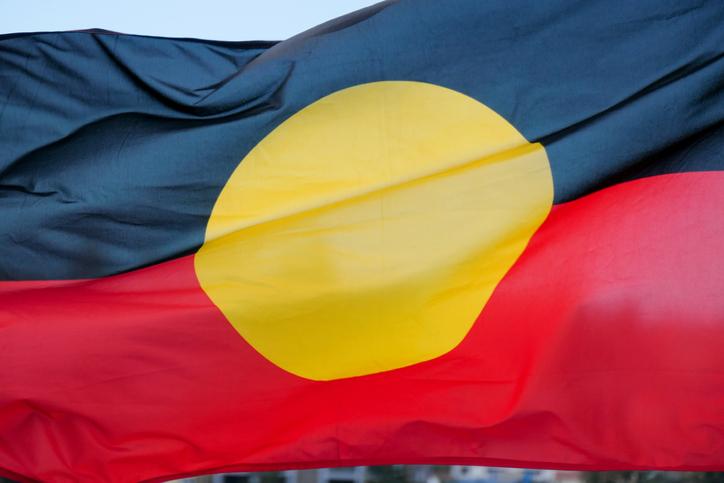
Seven structural changes to help bring Indigenous perspectives into curricula
You may also like
Popular resources
The incorporation of Indigenous perspectives in curricula is now a shared aspiration of Australian law schools. Yet despite the agreed benefits for First Nations students and communities, as well as for the quality of “lawyering” generally, progress remains irregular and fragile. The challenge of impermanence is an intractable one for us all in tertiary educational reform. How can we work to shore up curriculum advances against inevitable shifts in resources, priorities and personnel?
Here we offer seven strategies, divined from the collective experience of our own collaborators and First Nations advisers and tested in the supportive environment of a young regional law school in Queensland, Australia.
- Resource collection: Indigenous voices in higher education
- Weaving gold from EDI straw: an intersectional approach
- The language of inclusivity is not inclusive
Settle guiding principles
A school can agree on guiding principles for sustained and iterative curriculum reform. These can be co-designed with First Nations colleges or institutes (and in our case, affiliated First Nations lawyers), thereby opening collaborative partnerships that will be essential in the work to follow. Principles can draw from the substantial literature that emphasises the need for self-reflection, strength-based engagement with Indigenous perspectives, coherent integration, respect for diversity, attention to protocols and priority for First Nations voices and places. These guiding principles will not only guide curriculum efforts, but also manage early enthusiasm, build commitment and “place-hold” for the work to come.
Embrace the interdisciplinary nature of First Nations issues and build resources
We can seek out the discipline extensions and partnerships that will provide resources for contextual curriculum reform. Identify synergistic work in the field – potentially across disciplines – then build networks that will encourage confidence in colleagues, produce more holistic curriculum strategies, encourage cross-teaching efficiencies and establish research and supervision teams. Cross-disciplinary research centres might be expanded (or developed) to house and champion the new collaborations. In conjunction with this discipline broadening, schools can support and contribute to library collection reviews and critical teaching resources can be endorsed, digested for and distributed to staff.
Connect with First Nations colleges, colleagues and professional bodies
Strong reciprocal relationships with First Nations colleagues will be key to much of the curriculum reform work. These can provide invaluable support to staff leading a curriculum project (and build confidence in others) and strengthen curriculum strategies through expert co-design. Moreover, they can build networks for collaborative student support and supervision, ensure access to expertise in Indigenous methodologies (or practice priorities), ameliorate resource deficiencies for all and establish a unified institutional voice.
Connect with First Nations communities and community organisations
Guidance on building connections with local communities – based on mutual respect and genuine collaboration – can be sought from First Nations colleagues and colleges. The potential partnerships are many and varied, ranging from broad legal or business support and law-reform advocacy (or arranging pro bono advice) through to workshops and events, commissioning of local art, site-restoration work, sponsorship and elder or youth support projects. These relationships can help to build knowledge and capacity in staff, while offering genuine support to communities. Local elders and leaders might have particular roles of relevance to curriculum development – for example in the Murri Courts or corporations (in the case of law).
Build First Nations’ visibility
Through partnerships with First Nations colleges and institutes and pro vice-chancellor offices, schools can support university initiatives around local art and language, and engagement with Acknowledgment and Welcome protocols. They can also advocate for the inclusion of Indigenous perspectives in administrative and infrastructure projects, committee memberships (and terms of reference) and long-term research strategies. Schools can themselves demonstrate commitment to First Nations issues and speakers in public lecture and seminar programming and web resources, and consider sharing of facilities with community bodies.
Build roles for First Nations staff
One critical aspiration must be the creation of permanent identified academic positions – with proper support for the multifaceted responsibilities attending these roles. Schools can advocate tenaciously for these positions, while working to prepare a landscape in which such staff will be well supported in the important work to follow. An interim coordinator can help to effect structural changes (such as those discussed here) in preparation for an identified appointment and concerted curriculum reform. Honorary and adjunct appointments can also be a valuable way to recognise First Nations contributions to a field and strengthen the teaching capacities and connections of a school.
Build pathways for First Nations students
Through strong partnerships with First Nations colleges and institutes, a school’s tailored student support can target all stages of the journey. Schools can seek to engage in secondary school and remote outreach initiatives, and to actively contribute to preparatory programmes. They can ensure personal contacts and mentors are available to students from day one, and partner with colleges and institutes to support progress and completion. Tailored school resource sites can collect and advertise opportunities for networking, internships, scholarships and employment – as well as local events and news. Just as importantly, pathways to higher degrees can be carefully laid – via cross-disciplinary supervision capacity (as above), project and publication opportunities, and project employment.
These are our seven suggestions to help the best-laid plans of curriculum reform take root – to safeguard progress against inevitable shifts in resources, priorities and personnel. There is much more to be done, but we hope these practical steps might help to facilitate and secure the work ahead. For us, these strategies are primarily about relationships, reciprocal relationships that can help us all build a better educational landscape and help to ensure that that journey remains a genuine, supported and shared priority into the future.
Kirstie Smith is a Mununjali, Yugambeh woman and lawyer, and First Nations law lecturer at the University of Southern Queensland’s School of Law and Justice and Centre for Heritage and Culture. Simon Young is a professor at the University of Southern Queensland’s School of Law and Justice and Centre for Heritage and Culture, adjunct professor at the University of Western Australia, and external fellow of the University of Queensland’s Centre for Public, International and Comparative Law.
If you would like advice and insight from academics and university staff delivered direct to your inbox each week, sign up for the Campus newsletter.
Additional Links
For broader discussion in the law context, see Nicole Watson and Heather Douglas’ upcoming Legal Education through an Indigenous Lens: Decolonizing the Law School (Routledge).




